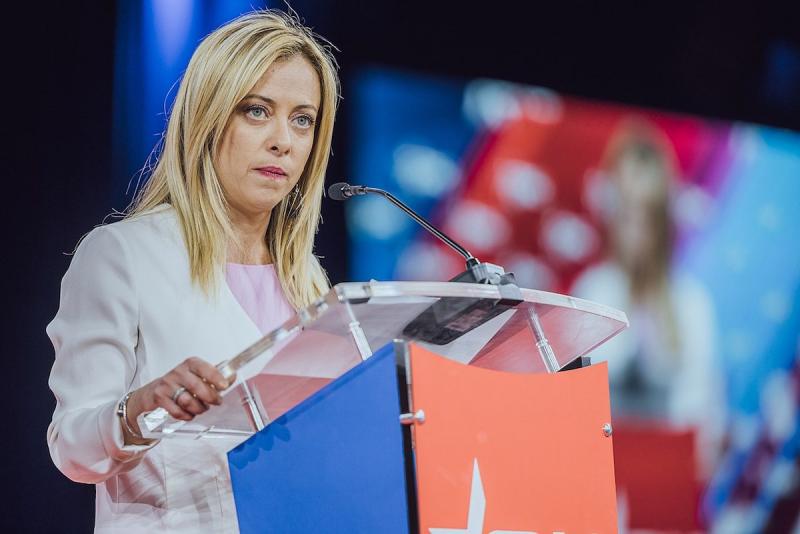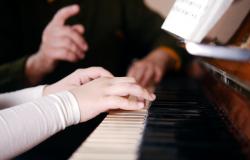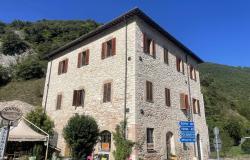Late last month, the office of Giorgia Meloni, the new President of the Council of Ministers of Italy, issued a circular stating that she should be addressed as Il signor Presidente (“Mr. President”). Meloni soon had second thoughts on the signor component, and reneged on her request.
Still, Meloni has expressly reiterated her desire to be called il Presidente del Consiglio, preferring to use the masculine article instead of the feminine one (la Presidente). In response, some members of both Italian and international media have argued that Meloni is reinforcing an outdated idea that the role of prime minister is inherently male. For its part, the Accademia della Crusca — the foremost authority on the Italian language — confirmed that la Presidente, la premier or la prima ministra would all be more linguistically sound choices.
English speakers learning Italian may be tempted to look at their own language’s diminishing usage of feminized forms of professions — think “actress,” “waitress,” “stewardess” — and then mistakenly apply the same framework of understanding to this Italian discussion. After all, decades-long debates about whether those English terms belong in contemporary parlance continue, and eradicating them in favor of gender-neutral terms like “actor” or “server” is commonly held up as the more progressive stance. In Italy, though, the implications of Meloni’s choice to strip her title of feminine associations are read very differently.
Before we get into those implications, however, let’s review the primacy of gender in the Italian language as a whole.
Gender in the Italian language: the basics

Italian nouns’ genders and numbers are both of extreme importance, as they affect the forms of other words, such as articles or adjectives.
As you may already know, there are two gender categories in Italian: femminile (feminine) and maschile (masculine). No noun is gender-neutral; even inanimate objects like il fiore (the flower) or la candela (the candle) are classified as either femminile or maschile.
A feminine noun will generally take the ending -a in its singular form and -e in its plural form. Definite feminine articles — the equivalent of “the” — are la (for the singular form) and le (for the plural):
- La sedia — le sedie (the chair — the chairs)
A masculine noun, on the other hand, will take the ending -o in its singular form and -i in its plural. Its definite articles are il (in the singular) and i (in the plural):
- Il tavolo — i tavoli (the table — the tables)
…except, of course, when the noun starts with s + a consonant, z, gn, ps, x, y, or pn. In those cases, the article -lo (gli in plural form) is used:
- Lo zaino – gli zaini (the backpack — the backpacks)
Both feminine and masculine nouns that start with a vowel will use the definite article l’ in their singular form, but their plural articles will be different:
- L’ora — le ore (the hour — the hours)
- L’olio — gli oli (the oil — the oils)
And — just to keep you on your toes! — there’s a whole group of nouns, some feminine and some masculine, that end in -e. Regardless of gender, these will take the ending -i in their plural forms:
- La chiave — le chiavi (the key — the keys)
- Il serpente — i serpenti (the snake — the snakes)
It’s not always easy to remember the gender of such nouns, so it’s good practice to learn their singular and plural forms, alongside the articles, when committing the vocabulary to memory.
Some nouns ending in -e and referring to people can be either masculine or feminine:
- Il cantante (m. singer) / la cantante (f. singer)
- Il testimone (m. witness) / la testimone (f. singer)
You’ll want to pay extra close attention to such nouns when they begin with a vowel and require an l’ article:
- L’interprete (the interpreter) — plural gli/le interpreti
- L’ospite (the guest) — plural gli/le ospiti
- L’insegnante (the teacher) — plural gli/le insegnanti
Gender and professions or social roles in Italian
Some nouns in Italian refer to professions or social roles and end in -a, regardless of the gender of the individual in question. The article, however, changes, depending on to whom you’re referring (a male or female member of that profession).
- Il/la giornalista (the journalist)
- Il/la pianista (the pianist)
- Lo/la psichiatra (the psychiatrist)
- Il/la farmacista (the pharmacist)
- Il/la regista (the film/theatre director)
- L’autista (the driver)
- Il/la collega (the colleague)
The endings also change in their plural forms, according to the gender of the individuals in question. (And for a mixed-gender group, the masculine ending is still the default.)
- I giornalisti/le giornaliste (the journalists)
- I pianisti/le pianiste (the pianists)
- Gli psichiatri/le psichiatre (the psychiatrists)
- I farmacisti/le farmaciste (the pharmacists)
- I registi/le registe (the film/theatre directors)
- Gli autisti/ le autiste (the drivers)
- I colleghi/le colleghe (the colleagues)
Other names of professions in Italian take the female form just by switching their -o or -e endings to an -a.
- Il maestro/la maestra (the teacher)
- Il cuoco/la cuoca (the cook)
- Il sarto/la sarta (the tailor)
- L’infermiere/l’infermiera (the nurse)
And, finally, for professions where the masculine form ends in –tore, the feminine form follows a specific pattern:
- Il pittore/la pittrice (the painter)
- L’attore/l’attrice (the actor/actress)
- Lo scrittore/la scrittrice (the writer)
- L’autore/l’autrice (the author)
Where things get thorny
As with any gendered language, Italian falls into the trap of “linguistic sexism” when its speakers discuss jobs and roles in which women were traditionally rare or nonexistent.
While the ending -essa, as in professoressa or dottoressa, was initially considered ironic or even trivializing, it’s now standard, sounding “normal” to the ear of the average speaker. And the aforementioned feminine forms are commonplace in everyday Italian and largely uncontroversial. But polemics often arise when feminine forms are used to describe women in professions that have historically been considered exclusively “manly:” Recently-introduced terms like la direttora (or la direttrice, the executive director or senior manager), l’assessora (the council member), la sindaca (the mayor), l’avvocata (the lawyer), and la soldata (the soldier) are still challenging for some Italian speakers to wrap their heads around when they're used to hearing the masculine as the default — il direttore, l’assessore, il sindaco, l’avvocato, il soldato and so on.
Those who advocate for sticking to the grammatical “purity” of Italian — though not everyone’s on the same page about what that means — often base their arguments on the allegedly displeasing aesthetics of words like la sindaca or la soldata. Proposed alternatives include, for example, una donna sindaco (a woman mayor) or una donna soldato (a woman soldier), which are also, technically, more grammatically correct. Still, we have to consider that all languages change over time and adapt to the society where they’re spoken.
Dictionary debates

Authoritative entities aren’t ignoring these realities, either. The renowned Italian dictionary Treccani, for example, broke from tradition in 2022 to create the first Italian dictionary where feminine forms of words precede the masculine ones, sticking to alphabetical order rather than automatically centering the masculine. (For example, bella is listed before bello — something that was previously unheard of.)
This latest edition of the dictionary was also the first to officially introduce feminine forms of professions traditionally viewed as masculine. Architetta (f. architect), notaia (f. notary), medica (f. medical doctor), and soldata (f. soldier), then, all gained more linguistic and cultural legitimacy. So, too, did some roles that were historically categorized as exclusively feminine; among these were casalingo (for househusband) and ricamatore (for a male embroiderer).
Treccani’s move was positioned as progressive (and perceived by many as such). While we’ve noted that comparing English to Italian can be like comparing apples and oranges, it’s still interesting to ponder how Treccani’s approach — a bid for better gender equality in language — differed from that of English speakers striving for the same thing. Curiously, the latter group is more likely to try to advance the cause via neutralization of nouns.
The case of Giorgia Meloni
Not all Italians necessarily view Treccani’s changes or related developments as positive, which brings us back to Giorgia Meloni’s insistence on the il. Meloni positions herself as a tough-line traditionalist on social issues: We can hypothesize that her wish to steer clear of the feminine article is rooted in a belief that only men, or those with stereotypically male characteristics, can be taken seriously in politics.
Meloni has received both criticism and validation of her choice. While the Accademia della Crusca defended la as the more appropriate article for Meloni, its president Claudio Marazzini conceded that “those who prefer the use of traditional masculine forms still have every right to use them,” explaining that some women don’t necessarily feel represented by feminist reforms to the language.
On the other hand, Laura Boldrini, elected in 2013 as the president of the Chamber of Deputies of Italy (and who, in her tenure, preferred to be called la Presidente), criticized Meloni on Twitter, asking what blocks her from asserting herself, pointing to Treccani's view that “the roles should be stated.” Boldrini also drew parallels to the name of Meloni’s party, Fratelli d’Italia (Brothers of Italy), seeming to suggest it was sexist and exclusionary.
Changing language in a changing world
Could, and should, Italian speakers really follow English speakers’ tendency toward gender-neutralization as the road to language reform? It’s up for debate. Italian speakers will inevitably stumble upon the lack of un genere neutro (a neutral gender) when trying to address a mixed-sex group of people. Ciao a tutte! (Hello everyone!) implies that the speaker is greeting a group of exclusively women, while Ciao a tutti! can be used toward an all-male group, but also remains the default way of greeting a mixed-sex group. (This latter use is referred to as the “inclusive masculine.”)
To move away from androcentric language — which arises out of androcentric society — some linguists have suggested embracing the asterisk (*), a solution that works in written language, but falls short in spoken Italian. In practice, this involves placing an asterisk at the end of a noun to circumnavigate linguistic binaries:
- Ciao a tutt*! (Hi everyone!)
- Car* collegh* (Dear colleagues)
While you may see this practice embraced in (some) Italian office email threads (particularly those heavy on Gen-Zers), the choice isn’t exactly practical. Sociolinguist Vera Gheno has instead proposed the method of using the symbol schwa (ə), familiar to English speakers and to some who carry on certain Italian dialects. The schwa (also “sceva”) is a neutral vowel, with no stress or tone — something resembling the bolded sounds in away, better or about. ə could theoretically be an easy written and spoken substitute for gendered endings in nouns:
- dottorə (doctor)
- avvocatə (lawyer)
- assessorə (council member)
Genderless nouns in plural, in their turn, would use the so-called long schwa (ɜ):
- Carɜ studentɜ (Dear students)
- Buongiorno a tuttɜ! (Good morning, everyone!)
A challenge with schwa signs in the short term is that they’re not accessible on standard keyboards. Some Italians who embrace Gheno’s proposed practice use @ and 3 in their text messages and emails as quick solutions.
The schwa is still far from mainstream; Italians are used to the familiar inclusive masculine and, of course, we can’t ignore the common conviction that some words just “sound bad” to an Italian ear. Whether something suona male, though, is often more about ingrained habits than anything else. Any language has to undergo changes to stay alive.
So, carɜ lettorɜ, we hope this sheds light on the complex issue of gender in Italian, which still has a long way to go when it comes to true inclusivity.



















